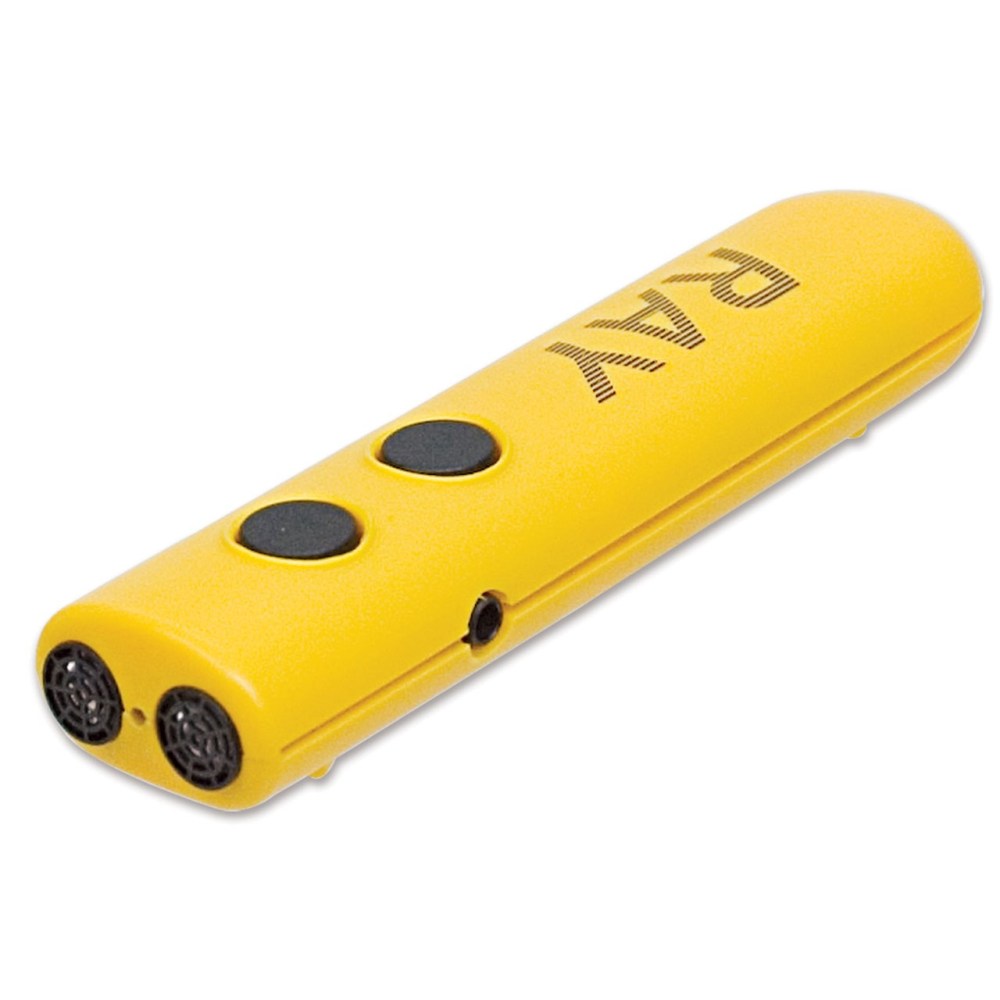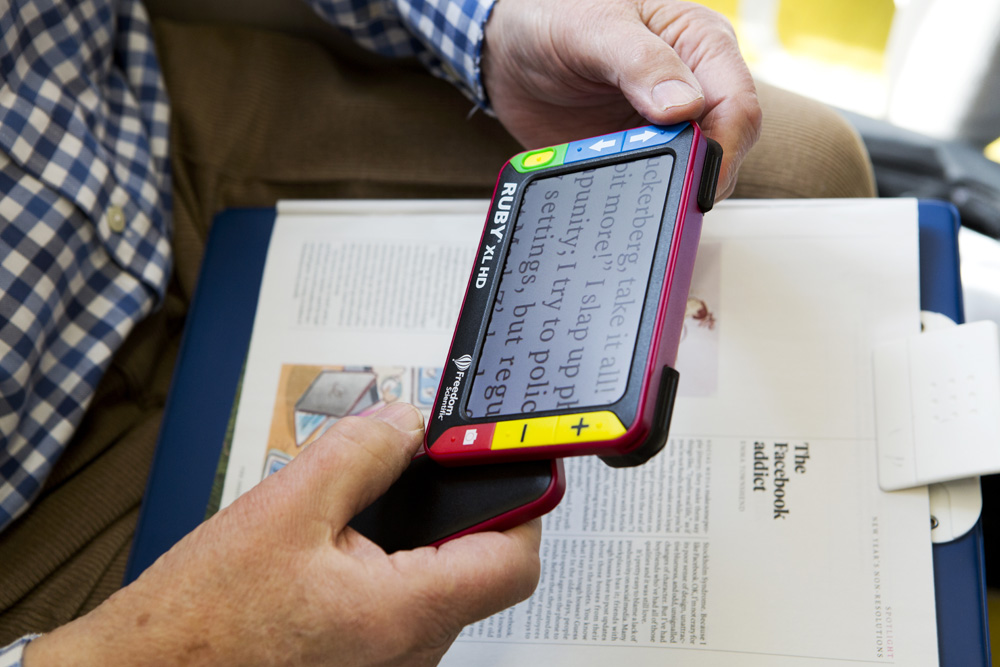A Guide to Life-altering Assistive Technology for the Blind and Aesthetically Damaged
The innovation of assistive technology has actually ushered in a transformative age for people who are blind or aesthetically impaired, offering devices that boost autonomy and improve day-to-day experiences. Advancements such as clever navigation tools and AI-driven applications are redefining just how customers engage with their surroundings, while accessible reading remedies and wise home innovations guarantee to more boost the high quality of life.
Smart Navigation Tools
Smart navigating devices are transforming the way individuals that are blind or aesthetically impaired engage with their atmosphere. These advanced modern technologies, which incorporate general practitioners, audio feedback, and haptic signals, offer individuals with critical info concerning their environments, boosting their freedom and movement.
One prominent example is the usage of wise canes furnished with sensing units that identify challenges and provide real-time comments via resonances or audio hints. These devices enable customers to navigate complex environments, such as busy streets or crowded public rooms, with increased confidence. Furthermore, wearable tools, such as smart glasses, are being created to aid in acknowledging faces, reading text, and determining items, better boosting the customer's spatial understanding.
Moreover, wise navigating devices are significantly integrating expert system to evaluate information and adapt to customers' preferences. This personalized technique not only boosts navigating performance yet likewise cultivates a sense of empowerment amongst customers. As technology continues to advancement, the possibility for wise navigation tools to produce a more inclusive and obtainable globe for people who are aesthetically damaged or blind continues to be promising, inevitably improving their everyday experiences and interactions.
Innovative Mobile Apps
Mobile applications are becoming effective devices for helping individuals that are aesthetically damaged or blind, using a series of functionalities that enhance daily living. These apps harness advanced technology to assist in day-to-day tasks, improve ease of access, and promote freedom.
One classification of ingenious mobile applications concentrates on visual recognition. Applications like Be My Eyes attach users with sighted volunteers through video clip calls, allowing real-time support for jobs such as reading labels or browsing unknown settings. Applications like Seeing AI utilize synthetic intelligence to explain environments, checked out message, and recognize things, giving customers with vital information at their fingertips.
One more substantial location is navigating and positioning. Applications such as Aira and Close-by Explorer provide audio advice, helping users navigate metropolitan areas easily. They use tailored support, permitting a much more certain exploration of the atmosphere.
Additionally, health and wellness and health apps provide to particular requirements, such as medication monitoring and physical fitness tracking. These applications intend to promote an alternative approach to wellness, making certain that individuals can keep their health and wellness separately.
Wearable Assistive Tools
Wearable assistive tools stand for a considerable innovation in modern technology developed to support people that are aesthetically damaged or blind. These devices boost mobility and independence by offering real-time comments about the surrounding environment. Amongst one of the most remarkable wearable technologies are wise glasses equipped with cams and sensing units, which can determine challenges and relay essential info via sound hints.

Another cutting-edge choice consists of wrist-worn tools that additional reading use ultrasonic waves to detect challenges and give navigational assistance. These devices often come with customizable setups, enabling customers to customize the notifies to their certain demands.
The assimilation of man-made intelligence in wearable assistive technology is additionally significant, as it constantly improves the accuracy and responsiveness of these devices. On the whole, wearable assistive devices are transforming the lives of the blind and aesthetically impaired, cultivating higher autonomy and boosting top quality of life via ingenious options.
Easily Accessible Reviewing Solutions
Available analysis options play a crucial function in making it possible for individuals who are visually impaired or blind to engage with text across various formats. These solutions include a series of technologies and devices designed to boost reading experiences, from typical print products to electronic content.
One famous service is Optical Character Acknowledgment (OPTICAL CHARACTER RECOGNITION) technology, which transforms printed text into electronic style, enabling individuals to listen to or review the web content using display readers. In addition, specialized e-readers furnished with text-to-speech capacities use adjustable analysis experiences, making it possible for users to change font dimensions and background shades for enhanced exposure.
Another efficient approach is braille screens, which supply tactile comments by transforming digital learn the facts here now message into braille. This allows people to check out touch, promoting greater freedom and access to literary works. Mobile applications developed for reviewing scanned books or documents can encourage individuals with instant accessibility to a vast library of materials (Braille displays and notetakers).

Smart Home Technologies
Smart home technologies have actually transformed the way people who are aesthetically impaired or blind connect with their living settings, enhancing both self-reliance and security. These ingenious services take advantage his comment is here of automation and connection to create an available space customized to the requirements of users.
Smart audio speakers and voice-activated aides provide hands-free control over various devices, allowing customers to adjust lights, safety, and temperature measures with simple voice commands. This capability minimizes reliance on sighted help and cultivates a sense of freedom. Furthermore, clever lights systems can be tailored to supply auditory comments or tactile cues, allowing individuals to navigate their homes better.
Additionally, safety systems outfitted with smart cams and sensors can send out real-time notifies to customers, boosting personal security without demanding visual verification. Automated door locks offer assurance, allowing users to secure their homes easily.
Incorporating wise home innovations not only improves everyday living yet also motivates social communication with connected devices - Smart glasses for the visually impaired. With continuous improvements in assistive technology, the future appears appealing, as even more services will emerge to further empower individuals that are visually impaired or blind, making certain a more comprehensive and independent way of living
Verdict
Finally, the innovations in assistive technology for the visually damaged and blind stand for a substantial leap toward improving freedom and lifestyle. Smart navigation tools, ingenious mobile applications, wearable gadgets, easily accessible analysis solutions, and smart home modern technologies collectively foster an inclusive environment. This combination of modern technology not only enhances wheelchair and day-to-day living yet also equips people to involve fully with their surroundings, advertising higher freedom and engagement in society.
Advancements such as clever navigation devices and AI-driven applications are redefining exactly how customers engage with their environments, while available reading options and smart home technologies promise to further boost the high quality of life. As innovation continues to advance, the capacity for wise navigation devices to produce a much more comprehensive and accessible globe for people who are aesthetically damaged or blind remains encouraging, inevitably improving their daily experiences and interactions.
Wearable assistive tools stand for a considerable improvement in technology developed to support individuals who are visually damaged or blind. Among the most noteworthy wearable modern technologies are smart glasses outfitted with sensors and electronic cameras, which can recognize barriers and relay critical details through audio hints.
Smart navigation devices, ingenious mobile applications, wearable tools, available analysis services, and wise home technologies collectively foster a comprehensive atmosphere.